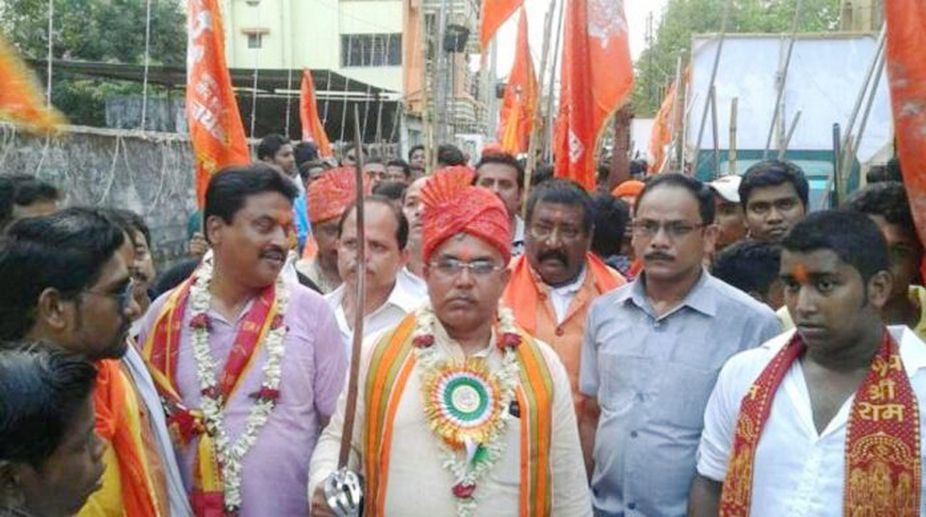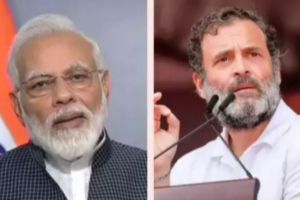Although borrowed from its original Western concept, the Indian notion/ practice of secularism has entailed such a unique connotation as to resemble what one could call a metamorphosis of its classical ideas.
In the historical West, the rise of the ‘secular’ has had much to do with the withering away of the pre-existing religious sway, resulting in a strict separation between State and religion, with the latter being relegated to private domains.
In contrast, Indian secularism is premised on the idea of the State’s inseparability from religion, with the State mandated to be equally sensitive/respectful or what Amartya Sen calls ‘equidistant’ towards all religious strands.
However, this principle of equidistance does not specify the exact ‘distance’ which the State must maintain from all religions. This has resulted in an intrinsic ‘incompleteness’ of Indian secularism. How can a State ensure equality or equidistance in its treatment of diverse religions?
In India, one ingenious way of maintaining equidistance is to make public expenditure on diverse religious institutions or rituals such as pilgrimages indiscriminately. Another unique means ostensibly deployed is to maintain a rough proportionality between officially-recognised celebratory days per annum under each religion and its respective demographic affiliations.
For instance, about 80 per cent of state-declared religious holidays in a year seem to correspond to the Hindu religious strand. But what are the Jains or Sikhs supposed to do on, say, seven government-declared Hindu holidays? Conversely what are the Hindus supposed to do on a government-declared religious holiday meant for Jains or Buddhists? Notably, a number of celebration-worthy religious occasions in a year can hardly be thought to be necessarily less under Jainism or Sikhism or Christianity just because the latter cater to tiny groups of people.
It is indeed doubtful whether declaration of official religious holidays proportionate to demographic size of affiliation does fulfil constitutionally mandated equality of treatment by the State of diverse religions.
When Indian space-research scientists go for a ceremonious worship at a Hindu temple just prior to the launch of a state-funded satellite, or when scientists of public-funded space research organisations pay an official visit to a Hindu temple and offer a replica of a satellite at the feet of a Hindu deity prior to its launch, does it not amount to a violation of even the ‘broader’ brand of Indian secularism, let alone the constitutional directive on upholding the scientific temper and spirit? The Indian mainstream media, intelligentsia and political elites hardly pay heed to such aberrations arising from a hybrid notion of Indian secularism.
Historically all such tricky, and sometimes even intractable, anomalies and their compounded potential for fuelling religious animosities was resolved in much of the West by a single stroke, namely constitutionally predicated separation between State and religion including the latter’s concomitant relegation to the citizens’ private domains.
But the Indian Constitution stopped short of incorporating this basic tenet into its customised notion of secularism, leaving the State in a perpetual posture of metamorphosis of being ‘secular’ without becoming ‘irreligious’.
And, there is a protracted political, social anthropological litany on how/why religion is so inextricably at the core of Indian tradition, society and culture as to entail religion, unlike Western secularism, explicitly into its statecraft, politics, and public domains at large.
Indian intelligentsia and political elites have called it a ‘richer’ texture of relations between the State and devout communities. There are, of course, several strands of critiques of the Indian variety of secularism, but none is disparaging of the Indian stance of inseparability between State and religion, thanks to the invention of an intrinsically impracticable ‘equidistance principle’.
Thus, while the Indian brand of secularism could appear ‘more secular’ than a few religion-based republics such as Pakistan (where an asymmetric legal status is given to Islam and other religions), India can hardly be said to be ideologically ‘secular’ enough.
In consequence, despite several special protective provisions/ privileges offered by the Constitution in defence of religious minorities, India is far from free of communal clashes, tensions and riots even after seven decades of its formal career as a secular nation.
Its clue lies in the fundamental fact that the citizens’ minds have not been made ‘secular’ enough. They are just legally bound to mechanically adhere to specific constitutional regulations and stipulations purported to inhibit the potential barbarity of communal clashes. Indeed there have been little genuine efforts since Independence to vanquish untamed religious sentiments and emotions, the very cause of religious conflicts ~ a task best performed historically in the West by mass-scale ideational triumph of reason and rationality (through inter alias appropriate educational content). In the Indian metamorphosis, while the State proclaims itself to be ‘secular’ in its legal and political treatment of all religions, but the society over which it presides is not.
This clearly points to a need for far deeper secularisation of people’s mind and outlook vis-a-vis more stringent laws and statutes meant to regulate and monitor recurrent and perilous upshots and bigotry out of people’s untamed emotions, sentiments, and unreasoned faiths and related sectarian identity.
As KN Panikkar has argued, among a triad of humanism, rationality and universalism that constitute the foundation of secularism, the Indian notion of soft secularism being inseparable from religiosity is devoid singularly of reasoned rationality.
By viewing secularism just as communal harmony, Indian mainstream thinking appears oblivious of the key fact that ‘secularism is not communal harmony; communal harmony is the outcome of secularism….It is, therefore, imperative to explore what constitutes secularism as an ideology beyond harmony’.
However, in the current socio-political climate there are little signs of rethinking on secularism on these classical lines of Western enlightenment. For example, let alone the BJP ideology, Shashi Tharoor, a Congress MP in his very recent book, Why I am a Hindu, suggests a replacement of the term ‘secularism’ by the word ‘pluralism’, implying a vision of a Hindustan, albeit based on pluralism rather than the one envisaged by hardliner ideologues of Hindutva. Alas, this also can only mean reinforced metamorphosis of true ‘secularism’ across India.
The writer is former Professor, BITS-Pilani, Hyderabad campus. He can be reached at arupmaha@yahoo.com











